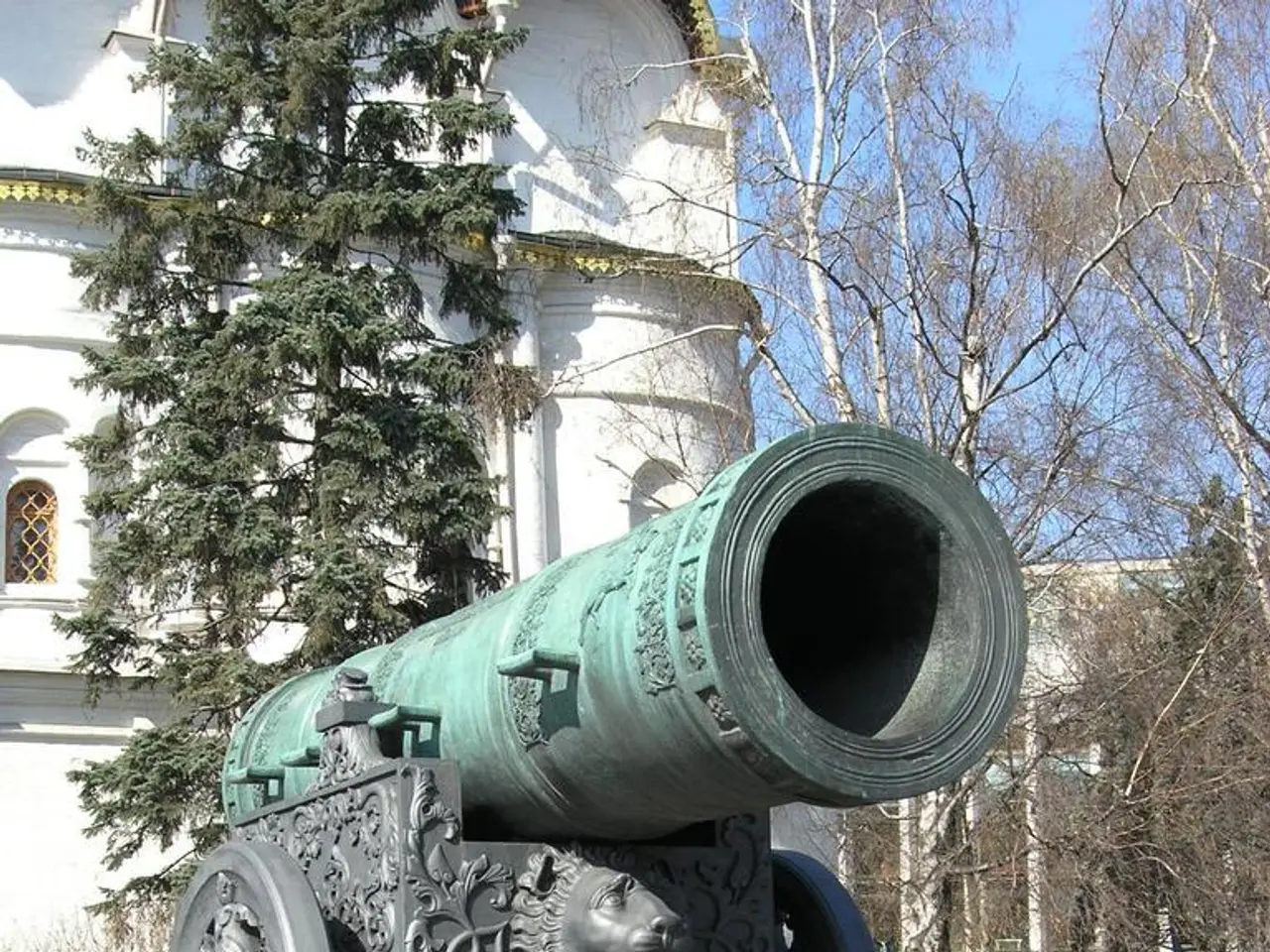Volcanic Eruption in Russia Caused by a Powerful Outburst, which may have been Amplified by the Impact of an 8.8 Magnitude Earthquake
Klyuchevskoy Volcano Erupts in Eastern Russia
The Klyuchevskoy volcano in eastern Russia is currently in an eruptive phase, following an 8.8 magnitude earthquake near the Kamchatka Peninsula. The eruption has intensified with a large ash plume reaching 11.5 km altitude, prompting a Red Aviation Alert, the highest aviation warning level.
Key details about the current status include:
- The eruption activity at Klyuchevskoy has been ongoing, with lava filling the summit crater since April 2025 and strong thermal anomalies detected via satellites. By late July, a large lava flow descended the WSW flank of the volcano.
- The massive ash plume generated after the M8.8 earthquake on July 29 is drifting northeast, affecting areas such as Ust-Kamchatsk and Krutoberegovo, raising concerns over aviation safety.
- Despite ongoing activity, the exposed population within 30 km is about 200 people, and external humanitarian assistance is considered unlikely at this stage.
- Regional emergency authorities report no settlements directly in the path of the ash plume currently, though evacuations have occurred around the volcano zone due to the eruptive risk.
- The intense earthquake, one of the strongest ever recorded, may have triggered or coincided with increased volcanic activity in the region, including Klyuchevskoy.
- The Aviation Color Code was previously at Orange and later raised to Red in light of the ash plume growth and eruption intensification.
In summary, Klyuchevskoy remains highly active with significant lava and ash emissions following the large seismic event, leading to escalated aviation warnings but, so far, no major humanitarian crisis reported.
The Klyuchevskoy volcano is the tallest active volcano in Asia and Europe, located on the Kamchatka Peninsula, a hotspot for geologic activity due to its position on the Pacific Ring of Fire. The recent eruption has been described as "typical activity" at Klyuchevskoy.
Interestingly, it has been suggested that melting glaciers could trigger volcanic eruptions around the globe, according to a recent study. However, the exact cause of the current eruption is still under investigation.
The Kamchatka branch of the academy captured the eruption on cameras observing the volcano. The ash plume from the eruption extends at least 1.5 miles (2.5 kilometers) above and 36 miles (58 km) east of the volcano, and the Kamchatkan Volcanic Eruption Response Team warned of potential explosions of ash up to 5 miles (8 km) high.
Despite the risks, the exposed population within 30 km is relatively small, with about 200 people. However, regional emergency authorities have been monitoring the situation closely and have evacuated areas around the volcano zone due to the eruptive risk.
[1] USGS: Klyuchevskoy Volcano Eruption Update [2] Russian Aviation Authority: Red Aviation Alert Issued for Klyuchevskoy Volcano [3] Kamchatkan Volcanic Eruption Response Team: Evacuation Orders and Ash Plume Updates [4] Geophysical Center of the Russian Academy of Sciences: Earthquake and Volcanic Activity Correlation Study
Although the Klyuchevskoy volcano's current eruption is causing significant ash emissions and prompting aviation alerts, it seems that there's no significant impact on medical-conditions or health-and-wellness of the local population, as indicated by the limited exposed population. However, in another context, one might investigate the potential effects of environmental science, like how melting glaciers could impact volcanic activity worldwide, or the impact of volcanic ash on the environment and environmental-science. Furthermore, the space-and-astronomy community could explore the correlation between intense earthquakes and altered volcanic activity, resembling such events on other terrestrial bodies in our universe.








